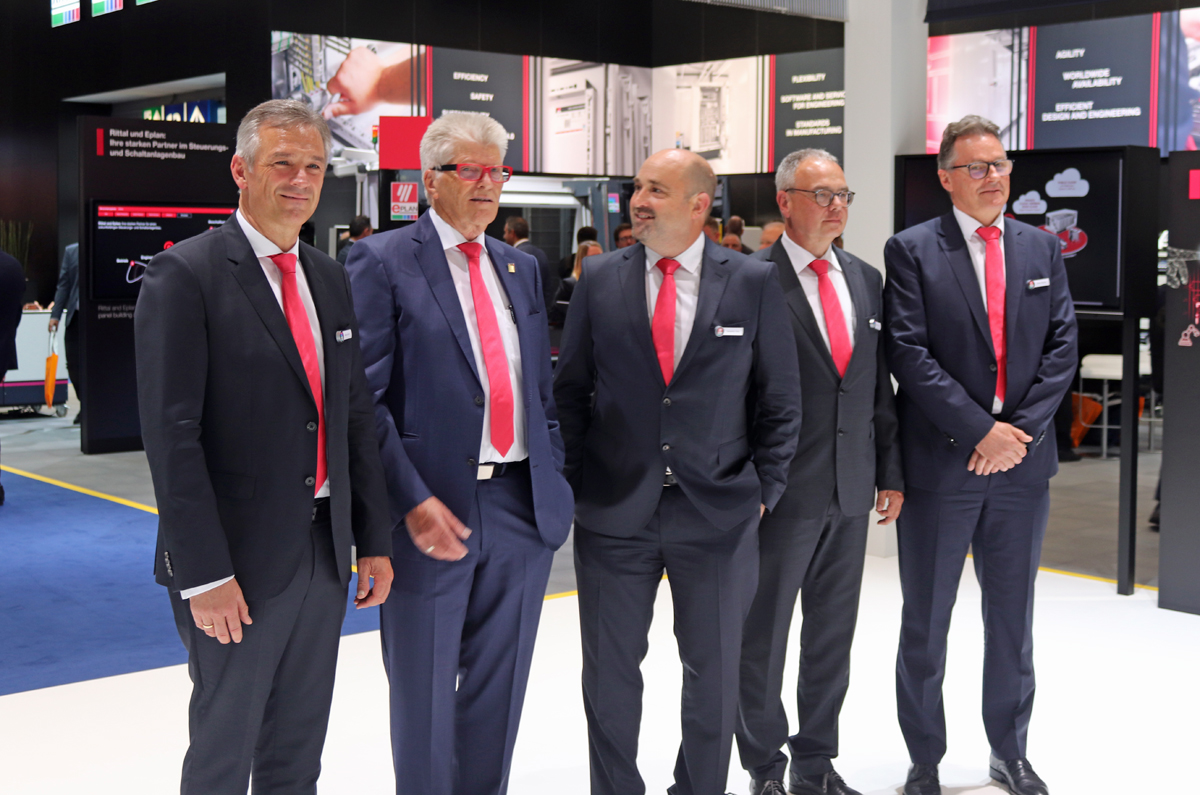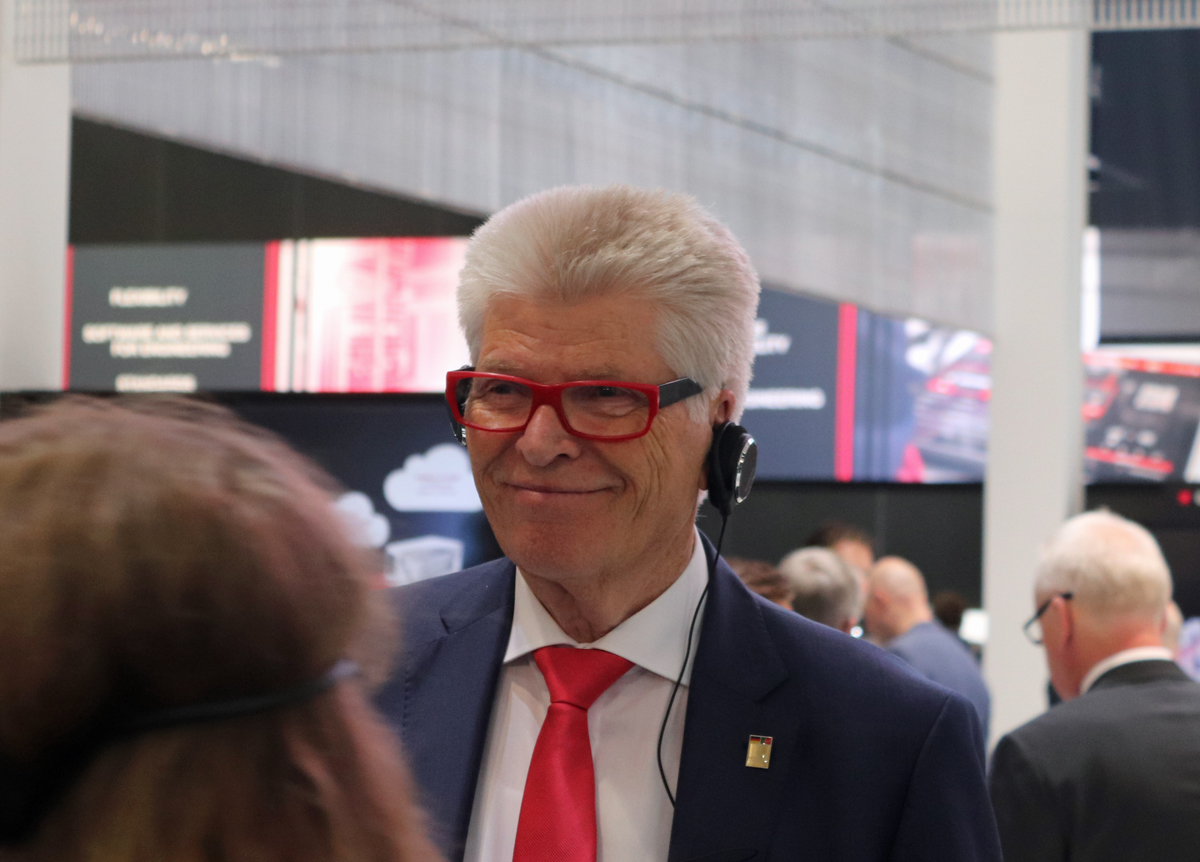At Hanover Fair 2022, they were not only all on a single booth in Hall 11, but also on a common strategic mission: Rittal, Eplan, Cideon and German Edge Cloud (GEC). Unless everything is deceptive, the Friedhelm Loh Group is hinting at a redefinition of automation: data-driven instead of programmed. (Photos Sendler)
At the last Hannover Fair before the pandemic, they were still on separate stands, Rittal and its sister companies Eplan, Cideon and German Edge Cloud, and practical projects around Smart Factory and Industrie 4.0 were additionally shown with partners in Hall 8. 2022 now featured a single booth in Hall 11 for the first time and a joint press conference with a short guided tour of the overall offering. Consistently connected ecosystems are what Rittal calls the main criterion of industrial automation today.
Markus Asch, Ceo Rittal International, explained the aim of the approach as “bringing the worlds of mechanical and plant engineering, automation, IIoT and IT, which are often viewed separately, even closer together and further exploiting the joint potential for customers.”
What this means in detail was then presented by the managing directors of the individual divisions. Sebastian Seitz, Managing Director of Eplan and Cideon, showed how the Eplan Engineering Platform can be used to create the data of components, machines and plants, of control cabinets and software in a standardized way already in engineering – or load it from the Eplan Data Portal. “This means that they are then also available for commissioning and operation, where they can be used for analyses and optimization,” says Seitz.
Uwe Scharf, Managing Director Business Units and Marketing at Rittal, used the control cabinet – the product with which Rittal originally became big – to demonstrate how the new digital switching plan “Rittal ePocket” can be used to access the complete machine and plant documentation, including the digital twin in the EPLAN Cloud, which is always up-to-date, via a QR code. Initial tests had shown that savings – sustainability is everything – of up to 70 percent energy are possible through efficient hybrid cooling of the latest generation.
Finally, Dieter Meuser, CEO Digital Industrial Solutions, German Edge Cloud, took the press representatives on a tour of various versions of the Oncite Digital Production System, via which Rittal has already connected 250 machines and devices from different manufacturers at its new plant in Haiger. The Digital Production System consists of two main components:
- The Oncite Industrial Suite is a growing collection of applications that allow, for example, low-code creation and management of apps, visualization, tracking and analysis of data. Behind it is Managed Kubernetes as a Service from German Edge Cloud.
- The Oncite Factory Edge is a cloud-based, scalable system in different performance classes that allows the orchestration of the Industrial Suite together with other IT solutions of the customer. From the edge cloud on the shop floor to the public cloud.
Michael Corban, editor-in-chief of KEM, rightly asked after the demonstration whether this Digital Production System was designed to make MES systems previously used in companies obsolete. (See his article in German language “Will MES systems be replaced by more agile IIoT-based solutions?“) Replacing them certainly won’t happen overnight, the speakers said. But a gradual migration to the newer methods can be expected.
One could take the question even further: Is there any indication here that the latest technologies will make holistic solutions conceivable that will enable a fundamental rethinking of IT landscapes in industry in the medium to long term? Instead of countless isolated solutions for individual processes or process strands, a more open infrastructure with edge and cloud that not only creates greater transparency and effectiveness in production, but also enables users to achieve the agility and flexibility that are currently the order of the day?
In any case, you have to give Dr. Friedhelm Loh credit for the fact that after the immense success of the standardization of control cabinets and then of data centers, he obviously has the right nose again that new promising business models for the industry can be developed with open cloud-based systems. No wonder he was smiling with satisfaction as he listened to what his teams were showing off at the press event.
The digitalization of industry is entering a new round. Automation using specialized software is being followed by automation increasingly driven by actual data. This could be the true driving force of the Internet of Things, which has been waiting for more than 10 years to show tangible added value.






